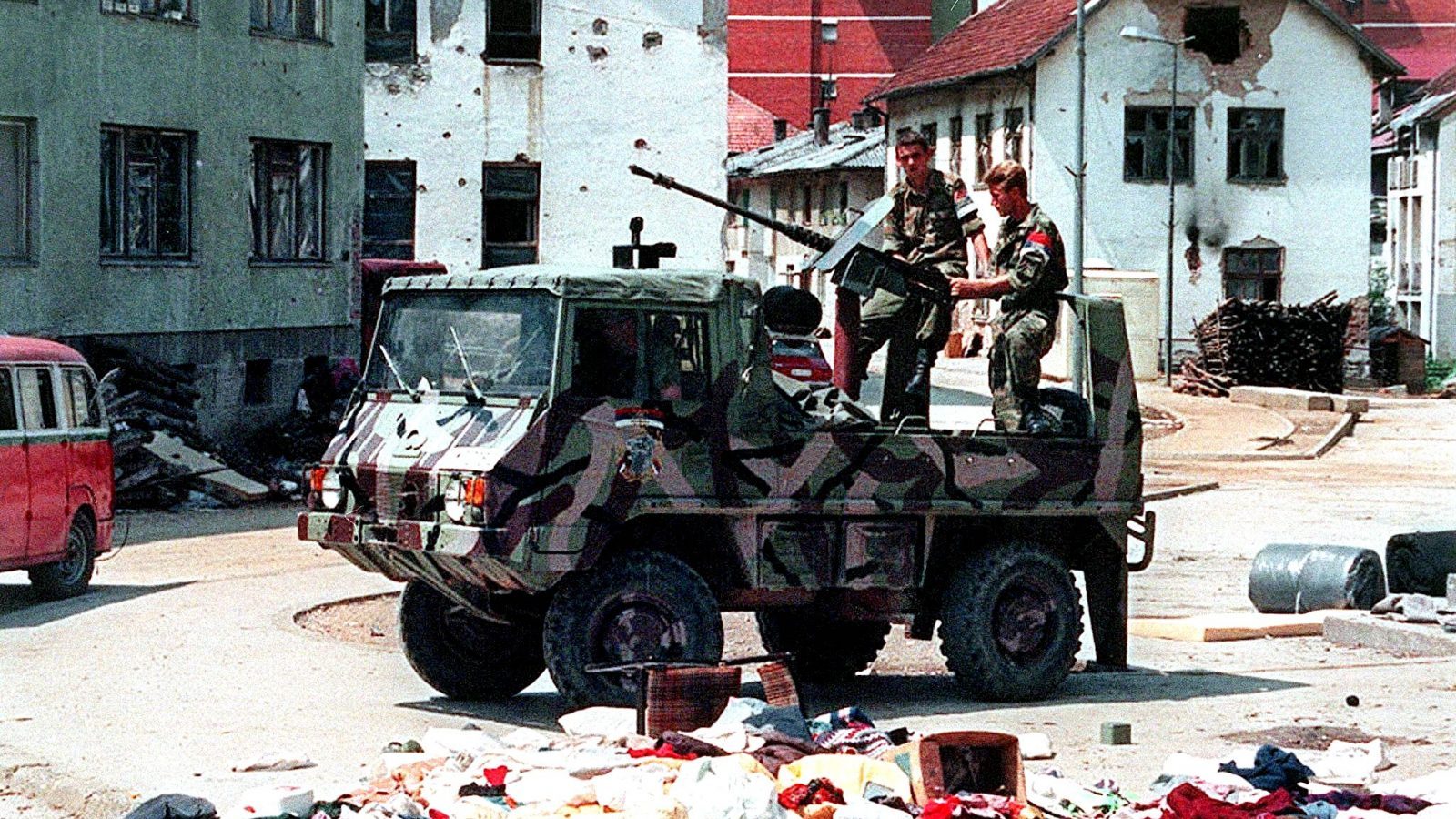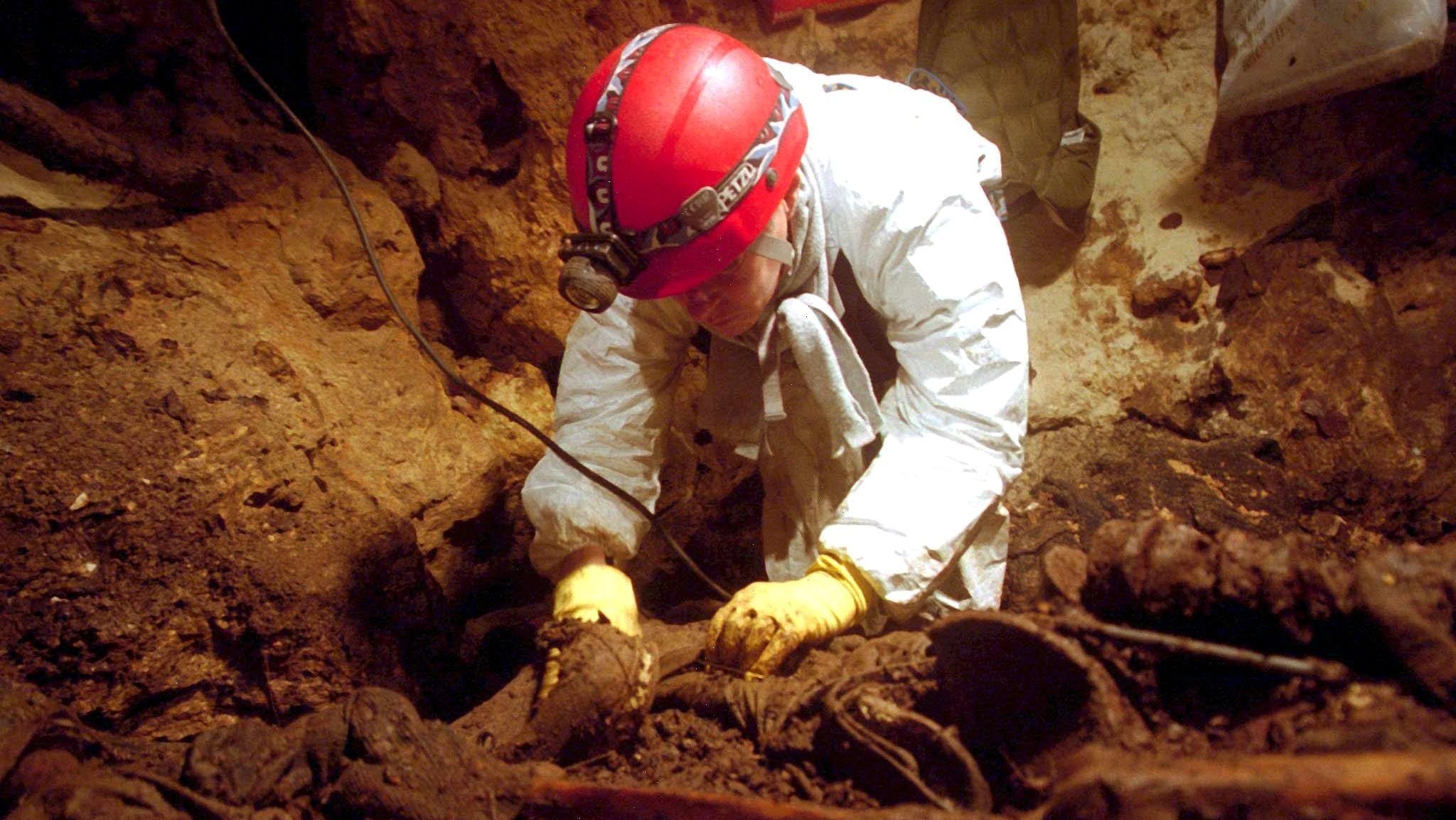This post is also available in: Bosnian
“All the way to court, ordinary people were insulting them, spitting on them and calling them ‘traitors’. Children were throwing stones at them too,” said Ashta’s nephew, Ndoc Ashta.
All six men including Gjelosh Ashta, who was a 20-year-old student at a Catholic seminary at the time, were sentenced to death after a trial that lasted just 13 days.
“He was shot. He was shot in the presence of his mother,” said his nephew.
“She asked to touch her son with her hand and they did not let her, and one of the supervisors who was there told her: ‘Get out of here because you deserve a bullet because this puppy was yours.’”
His grandmother told him that the six Catholics who were killed were all buried in the same place in Shkodra.
“After some time, the wall was demolished, diggers were brought in and a Construction Company Sector building was built there. Everything was lost. Using bulldozers, they tipped everything into the River Kir,” said Ashta.
The six victims’ remains have never been found, even after the fall of the communist regime in the early 1990s.
“I have personally searched for my uncle, efforts were made by associations representing people who were politically persecuted, in the first years in 1992 to 1995. The Catholic Church also contributed,” he said. “One of the clerics who was shot with my uncle was Italian, Father Daniel Dajlani, and his nephew came from Italy when the search began.”
But when construction work began at the site in the 1960s, “everything disappeared”, he said.
Ndoc Ashta, whose uncle was arrested in 1946 and never seen again, in Shkodra: Photo: BIRN.
Buried in unmarked graves
Gjelosh Ashta was one of several thousand Albanians who went missing under the repressive regime of Communist leader Enver Hoxha. During 45 years of Communist rule, an unknown number of Albanians were executed and buried in unmarked graves or died in prison camps.
The names of about 6,000 people who were executed were identified in the early 1990s. But the whereabouts of many of them remain unknown.
In 2018, the International Commission on Missing Persons, ICMP started the process of searching for their remains after eight years of negotiations with the Albanian government.
But the process has now stalled. Two mass grave sites from the Communist era were identified in Dajti and Ballsh areas in September 2018, but orders for excavation have not yet been issued by the authorities, the ICMP said in a report in March this year.
Bilal Kola, director of the Institute for the Politically Persecuted, told BIRN that his organisation has made more than 20 requests to local and general prosecutor’s offices for information about missing persons.
“In many cases, we did not get an answer, and in cases in which we got an answer, of course we had relevant meetings,” Kola said.
But despite promises made at these meeting, “the process has not progressed”.
In the absence of official action, people have been doing their own searches for their relatives’ remains, seeking information about grave sites and even starting the work of exhumation themselves.
But without the possibility of verification using DNA matching techniques, these private initiatives are not scientifically rigorous, Kola pointed out, although he said that he understands why victims’ relatives have taken action independently.
“So I do not judge at all the ways in which people have done it, but from an objective point of view, my assessment is that the process has not been accurate and scientifically adequate,” he said.
The ICMP expressed confidence that it is still possible to find the remains of people who disappeared under Communist rule.
“Though the events concerning the missing persons in Albania happened decades ago, our experience demonstrates that missing persons can be identified even after decades of their disappearance,” the ICMP said in a written response to BIRN’s questions.
“Some actions that would yield better results would include state institutions strengthening their coordination in the missing persons process, more budget being allocated to investigate missing persons cases, and the Office of the Prosecutor taking more action,” it explained.
The ICMP also said that it is “vitally important” for the Albanian authorities to “consolidate data from the archives and compile a comprehensive list of persons who went missing during the Communist era”.
At present, this is not being done.
An exhibition in Tirana in September 2011 of photographs of atrocities committed during Communist rule in Albania. Photo: EPA/ARMANDO BABANI.
Officials’ commitment questioned
Ndoc Ashta said that 13 of his relatives were killed under Communism in Albania. As well as his uncle, the Catholic theological student Gjelosh Ashta, they included a three-year-old child who died in a detention camp in Berat, whose remains are still missing and an 11-year-old girl who was killed along with her father and uncle in a boat on the River Buna while trying to escape from Albania to neighbouring Montenegro in 1990.
“As soon as they entered the waters of the River Buna, the police patrol opened fire at them non-stop with automatic weapons. Four people were killed there, among them the 11-year-old girl,” Ashta said.
“Our police who killed them did not take them away, the police patrol from Ulcinj in Montenegro asked them several times: ‘Take them because these are your citizens.’ But they did not take them, and they were taken and buried in Ulcinj,” he added.
Five years later, the victims’ relatives were allowed to retrieve their bodies from Montenegro, but the 11-year-old girl had fallen into the river and her body was carried away and never found.
Simon Mirakaj, who works for Albania’s Authority for Information on Former State Security Documents, was interned by the Communist regime and some of his family members were shot.
Mirakaj said that he accepts that “finding the people who went missing during communism is a delicate problem because a lot of time has passed since it happened”.
However, he added: “For the sake of the truth, it must be said that there has been no serious commitment from the state.” He also claimed that families have been asked for money to have their relatives’ bodies exhumed.
One of the biggest problems that there is no legislation that obliges prosecutors from the Communist era to reveal where people were killed, Mirakaj explained.
“For prosecutors who participated in crimes for political motives during the dictatorship, there has been no law under the democratic system since 1992 that obliged these prosecutors who were involved in executions to reveal the places of execution, apart from their own free will or conscience,” he said.
“This has made it even more difficult today, 30 years later, to find the bones of these people.”
Erald Kapri, an Albanian historian who is a member of an organisation called Kujto.al, which focuses on the crimes committed under Communism, said that although prosecutors could open cases after human remains have been found, “there is no desire to do so”.
As the years have passed, most families believe that the remains of their relatives will never be found, Kapri concluded: “Most of them have lost faith.”
A memorial in Tirana for former political prisoners of the Communist regime in Albania. Photo: EPA/ARMANDO BABANI.
‘The public is being fed fairytales’
One of the disappeared whose remains have yet to be found is Italian citizen Giuseppe Terrusi, a bank director who died in 1952 after being imprisoned by the Albanian Communist regime for allegedly stealing money.
“From direct testimonies, it turns out that he died of a heart condition. He died after seven years of harsh imprisonment, in 1952. Some witnesses have claimed that he was buried inside the prison in Burrel,” his son Aldo Renato Terrusi told BIRN.
In 2019, Albanian Prime Minister Edi Rama ordered the establishment of a working group to find and identify the remains of Terrusi. Excavations then started in Burrel, but his son stopped them because they were using mechanical diggers. “I expect the excavations in the search for the remains of my father to restart with more appropriate equipment for searching for bones,” Terrusi said.
Kastriot Dervishi, a historian who has worked on topics related to the former Communist regime, accused the authorities of incompetence. “Institutions do not know what to do. They don’t have a clear idea,” he said.
Dervishi argued that it is highly unlikely that any new information about the whereabouts of the graves of victims of the Communist regimes will emerge.
“The public is being fed fairytales that files will be opened up and diagrams of grave sites and things like that will be made public, as if we were waiting until now for these things. But all this information has been exhausted for years and nothing else is expected to come to light,” he said.
He said that in the case of the missing Italian banker, “the territory where Terrusi was once buried has been destroyed and his remains can no longer be searched for there”.
Aldo Renato Terrusi acknowledged that the search for his father’s remains would not be easy.
“I’ve had a lot of information and misdirection, so now, no information is reliable. Too many lies!” he said.
“It is very likely that whoever was buried inside the prison was moved elsewhere with the aim of them not being found again. But I hope that the search for the bones of all those people who are missing will carry on.”




